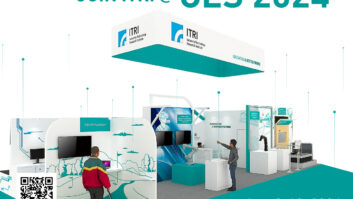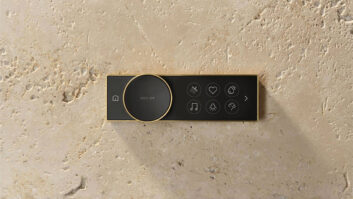I have to admit, the 2004 version was one of the best Consumer Electronics Shows I’ve ever attended, and for several reasons: the size of the crowd, the enthusiasm attendees demonstrated for the exhibits and the way they packed most of the keynotes and information sessions. It was really great seeing the CES bounce back from the somewhat depressed atmosphere of the 2003 event.
But the biggest reason was seeing television sets again ruling the roost at CES. Having grown up in the industry primarily covering TV manufacturers, I am somewhat prejudiced. But I was really excited to see that TV, rather than cellphones, mobile electronics, PCs, personal videos, satellite or audio was this year’s star (though I have to say that the proliferation of flat-panel TV brands — the majority unfamiliar — was a bit confusing).
The transformation of LCD TV from the esoteric high-tech product it was just last year to something of a commodity offered by a host of no-name marketers was somewhat surprising. I, frankly, doubt many of those brands will be around for very long.
And what was the theme of this year’s show? It was offered up right at the opening day keynote session by CEA president Gary Shapiro, who said its No. 1 resolution for the new year was to help the industry simplify its products. Keynote opener Fumio Ohtsubo, president of Panasonic AVC Networks, quickly echoed his remarks.
FCC chairman Michael Powell, in a one-on-one session with Shapiro, said the industry’s products were too difficult to learn to use. And the need to simplify was stressed in comments by all those appearing during a panel discussion on “The Female Perspective,” as well as in the results of a female buying survey conducted by CEA’s market research department.
The need for product simplicity was also stressed in Philips president Gerard Kleisterlee’s Leaders in Technology dinner presentation, in which, as an aside, he also questioned how a manufacturer could produce a DVD player to sell in the United States for $29.95 and still make the required $10 patent royalty payment.
Of course simplification is easier said then done. Let’s face it, our products, particularly the multi-function ones, are complicated, and there is no “Royal Road” to understanding them. One solution, offered up by Kodak’s worldwide business research director Susan Stoev, is to follow her company’s lead by including two instruction sets. One is a short brief on the basics of how to set up and use the product, the other a full-fledged manual covering detailed operations.
The lesson here is the one I learned in journalism school. “K.I.S.S.” or, “Keep It Simple, Stupid.”
Anyway, in the pure interest of technology, I spent a couple of hours at the “other” show in Vegas, the Adult Video Show, which at one time was part of CES. I can tell you they are not being left behind (or should I say, back).
IN/X/World is launching a 24-hour three-channel satellite service. For $360, a consumer gets a receiver, dish and a two-year subscription. Annual renewals are $99. Says IN/X/World in its circular, “How much more simple (sic) can it get?”
HiDefXXX is marketing, at $29.99 each, single-sided dual-layer DVDs that offer both regular resolution films for playback on conventional players, and high-definition (720p) versions that have to be accessed through a PC. We found 3D Fantasy Films promoting 3D movies and its framed red/blue plastic lens glasses — not the cheap cardboard jobs passed out in theaters. The films sell for $64.95 each and the glasses are an optional extra.
So that segment of the entertainment software industry, the one that truly launched the home video market, is again one step ahead of Hollywood.













